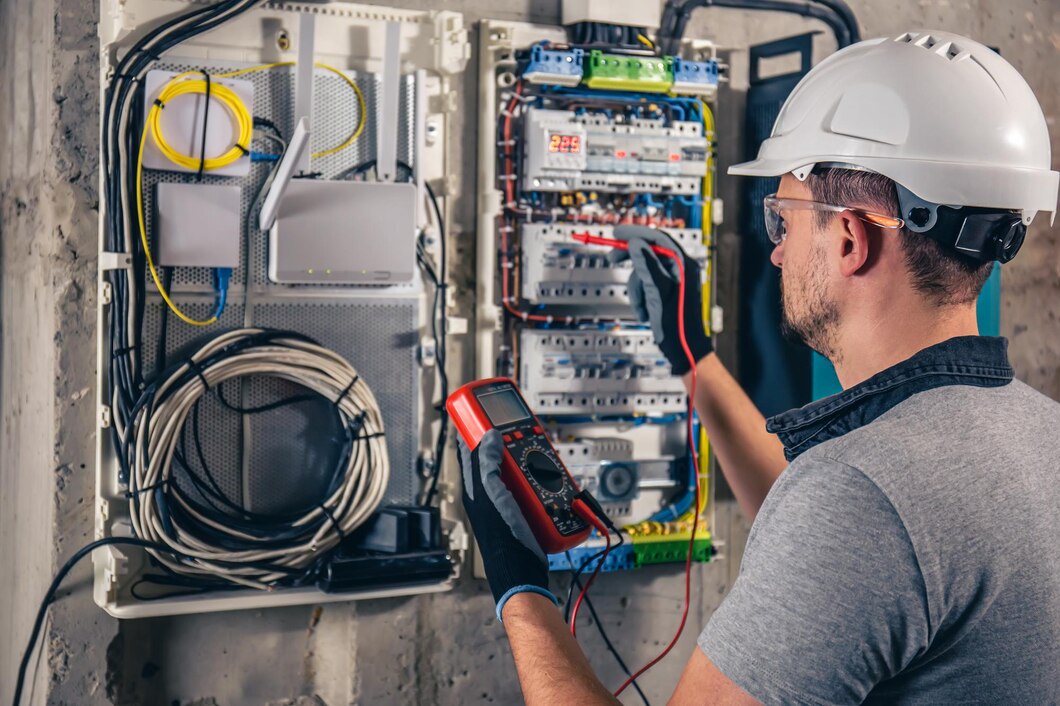In today's world, the need for sustainable and eco-friendly solutions is more pressing than ever. The field of electrical distribution and protection is no exception. As the demand for electricity continues to grow, it's essential to find ways to efficiently manage electrical systems while minimizing environmental impact. In this blog post, we will explore green solutions for electrical distribution and protection, highlighting the importance of sustainability in the electrical industry.
The Importance of Sustainability in Electrical Systems
Electrical distribution and protection systems are integral components of modern infrastructure. They ensure the reliable supply of electricity to homes, businesses, and industries. However, traditional electrical systems often come with environmental drawbacks, such as energy losses, resource consumption, and greenhouse gas emissions. Here's why sustainability matters in this context:
Energy Efficiency: Sustainable electrical systems prioritize energy efficiency, reducing wastage and minimizing the carbon footprint associated with electricity generation.
Resource Conservation: Eco-friendly solutions aim to reduce the consumption of natural resources, including metals, minerals, and fossil fuels, which are integral to traditional electrical systems.
Reduced Emissions: Sustainable practices help mitigate greenhouse gas emissions associated with electrical production and distribution, contributing to climate change mitigation efforts.
Resilience: Sustainable electrical systems are often more resilient and adaptable to changes in energy sources, making them suitable for a transitioning energy landscape.
Green Solutions for Electrical Distribution and Protection
Smart Grids: Smart grids are intelligent electrical systems that use advanced monitoring and control technology to optimize electricity distribution. By minimizing energy losses, reducing peak demand, and integrating renewable energy sources, smart grids contribute to energy efficiency and reduced environmental impact.
Microgrids: Microgrids are localized, self-contained electrical systems that can operate independently or in conjunction with the main grid. They often incorporate renewable energy sources like solar panels and wind turbines, promoting clean energy generation and distribution.
Energy Storage: Battery storage solutions, such as lithium-ion batteries, offer an eco-friendly way to store excess electricity generated from renewable sources. These batteries help balance supply and demand, reduce energy wastage, and increase grid stability.
Efficient Transformers: Modern transformers are designed to be more energy-efficient, reducing losses during electricity conversion and distribution. High-efficiency transformers minimize resource consumption and greenhouse gas emissions.
Recyclable Materials: Sustainable electrical systems prioritize the use of recyclable or environmentally friendly materials in their construction. This reduces the environmental impact of manufacturing and disposal.
Smart Metering: Smart meters enable real-time monitoring of electricity consumption, helping consumers make informed decisions about energy usage. This leads to reduced energy consumption and lower bills.
Renewable Energy Integration: The integration of renewable energy sources, such as solar and wind power, into electrical grids reduces the reliance on fossil fuels and lowers greenhouse gas emissions.
Demand Response Programs: These programs encourage consumers to shift their electricity usage to off-peak hours, reducing the need for additional power generation during peak times. This minimizes stress on the grid and lowers energy costs.
Power Quality Management: Efficient power quality management systems help maintain stable and reliable electricity supply while minimizing energy losses.
Arc Fault Detection: Advanced arc fault detection technology in electrical protection systems helps prevent electrical fires by identifying dangerous conditions and interrupting the circuit.
Benefits of Eco-Friendly Electrical Distribution and Protection
Reduced Energy Costs: Eco-friendly electrical systems often result in reduced energy consumption and lower energy bills for consumers and businesses.
Environmental Benefits: These systems help reduce carbon emissions, resource consumption, and environmental pollution, contributing to a cleaner and more sustainable planet.
Enhanced Grid Reliability: Smart grids and microgrids improve grid reliability by reducing power outages and improving the grid's ability to recover from disruptions.
Increased Energy Independence: Renewable energy integration and energy storage solutions offer greater energy independence, reducing reliance on centralized power generation.
Job Creation: The transition to sustainable electrical systems creates job opportunities in renewable energy, energy efficiency, and related industries.
Challenges and Considerations
While eco-friendly electrical distribution and protection solutions offer numerous benefits, they also come with challenges and considerations:
Initial Costs: Many green technologies require significant upfront investments, which can be a barrier to adoption.
Interoperability: Integrating new technologies into existing electrical infrastructure can be complex, requiring careful planning and coordination.
Maintenance: Some green solutions may require specialized maintenance and training, which can add to operational costs.
Regulatory and Policy Frameworks: Supportive policies and regulations are essential to incentivize the adoption of sustainable electrical systems.
Consumer Awareness: Raising awareness among consumers and businesses about the benefits of green electrical solutions is crucial for widespread adoption.
Conclusion
Sustainability is no longer an option but a necessity in the field of electrical distribution and protection. Eco-friendly solutions not only reduce environmental impact but also offer economic benefits, enhanced grid reliability, and energy independence. As we continue to increase our demand for electricity, embracing sustainable practices is essential to meet our energy needs while safeguarding the planet for future generations. By investing in green technologies and adopting eco-friendly practices, we can create a more resilient and sustainable electrical infrastructure.


No comments yet